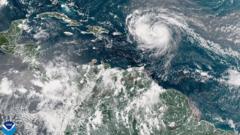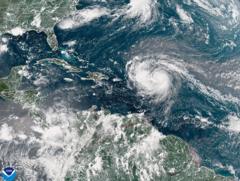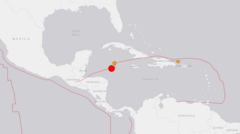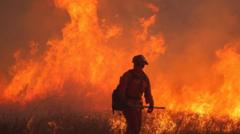SAN JUAN, Puerto Rico (AP) — An unusual silence has enveloped the Atlantic Ocean with no named storms reported for nearly three weeks, coinciding with the peak of the hurricane season. Meteorologist Philip Klotzbach from Colorado State University raised the question many are pondering: Where the heck are the Atlantic #hurricanes?
The last named storm, Tropical Storm Fernand, emerged on August 23 and faded away by August 28 without impacting any land areas. This is a significant anomaly, marking only the second instance since 1950 that the peak hurricane season has passed without any named storms forming, highlights Ernesto Rodríguez, the meteorologist at the National Weather Service in San Juan.
“Usually, conditions during this period are prime,” Rodríguez noted, pointing out the rarity of this year’s calm. The quietest peak known to date occurred in 1992, following the devastation of Hurricane Andrew in Florida.
Why it’s so quiet
Experts have identified three primary reasons for the current lull in storm activity:
- **Strong Wind Shear**: A condition that alters wind speed or direction with altitude has intensified, due to cyclonic circulation in the mid-upper atmosphere.
- **Dry and Stable Air**: A persistent presence of dry air across the tropical Atlantic has hampered storm formation.
- **Reduced Rainfall in West Africa**: This seasonal shift impacts the formation of tropical waves crucial for storm development.
Rodríguez described the situation as pretty positive, especially for us in Puerto Rico, which is still recovering from Hurricane Maria's catastrophic impact in 2017.
Despite the current calm, meteorologists warn that late September and early October could see an uptick in storm activity. A cluster of storms emerging east of the Caribbean Sea has the potential to become a named storm, although it’s expected to remain far from land. Another storm cluster lags behind but has only a 20% chance of development.
History tells us that a substantial percentage of hurricane activity in the Atlantic typically occurs in August and September. Despite NOAA’s prediction of an above-normal season breeding 13 to 18 named storms, this year has yielded a mere six storms to date.
With ocean temperatures still warm and conducive to storm fueling, meteorologists stress vigilance as conditions appear set to change in the coming weeks.
}``` This structured JSON contains a title, description, summary, a placeholder image URL, and the full text of the article based on the provided material. Adjust the image URL as necessary for the actual content.


















